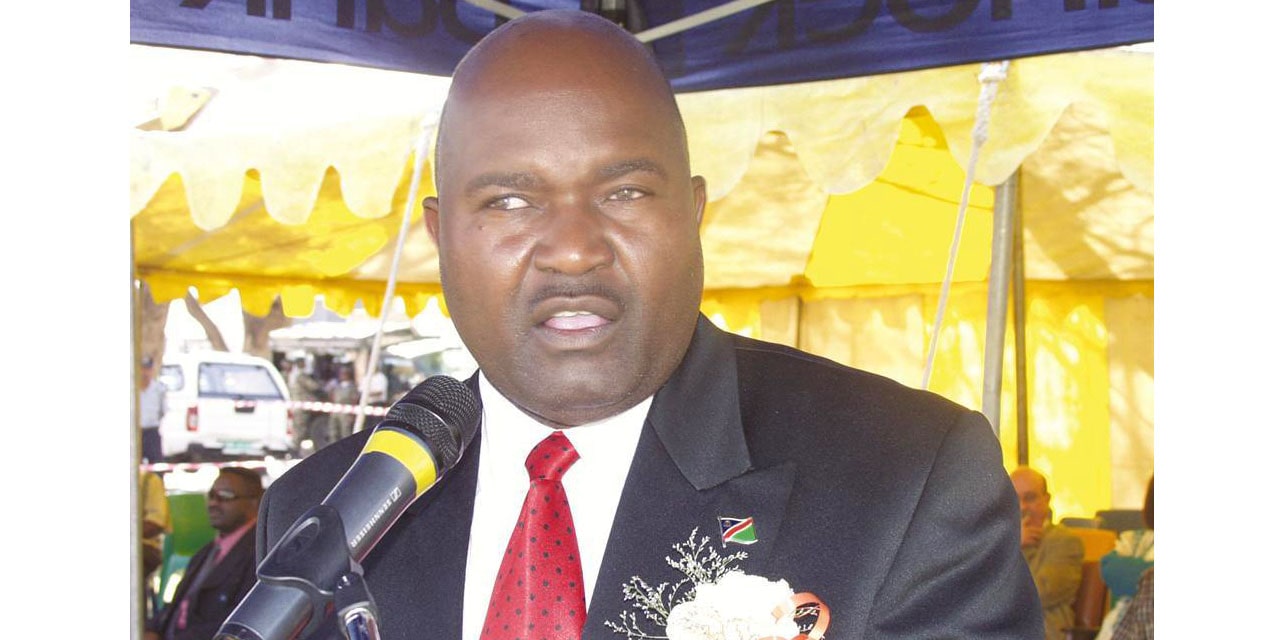Martin Endjala
The Oshikoto Regional Council used N$40 million from its budgeted N$46 million for the development of infrastructure in the region during the past year while the execution rate for infrastructure development stood at 88 percent.
Penda Ya Ndakolo the Oshikoto Regional Governor during his State of the Region Address, said that the region focused on the provision of clean drinking water, electrification of rural areas, settlements and growth centres, surveying of settlements, implementation of the sanitation program, and the construction of roads and offices.
During the year under review, the Oshikoto Regional Council budgeted for 17 areas to be electrified.
Among those, seven areas were fully electrified with medium and low voltage networks. The other ten projects are still in progress and the majority of them are above 80 percent completion rate.
The electrification of six schools in the Region including Cuca shops and a church in the Okankolo Constituency has also been completed.
“I wish to reiterate that as Government, we remain committed to promoting our national priorities through our National Development Plans to address and overcome the triple challenges of unemployment, inequality and poverty,” said the Governor.
Ya Ndakolo said that the importance of good governance for the attainment of goals and objectives cannot be over-emphasized, adding that good governance requires credible and trustworthy institutions to build on transparency and accountability which goes beyond mere service delivery.
Ya Ndakolo added that this also means answerability if a service is not delivered in a timely and efficient manner, adding that it is not only the citizen’s right but also their duty to demand it.
The construction of electrical services in Onayena Extension 1, phase 2 has commenced and is anticipated to be completed by June 2023.
Other key infrastructure development projects successfully implemented include the construction of water and sewer reticulation in Oshivelo Extension 1, phase 3; and the construction of the Guinas Constituency Office Phase 2.
The Maintenance Sub-Division at an amount of one Million Namibian Dollars also constructed a workshop where all equipment of the Sub-Division is stored.
Furthermore, the region continues to face water scarcity challenges, especially in the deep rural areas where water is salty or the pressure is low. A heat wave has worsened the current dry conditions, putting further strain on the already existing water difficulties.
However, despite these challenges, the Governor maintains that the regional leadership is fully conscious of the responsibility they bear to mitigate such challenges.
To mitigate this, the Regional Council has completed the installation of the Omukulukila borehole in NehaleLyampingana Constituency, the extension of the Oshiyagayawater pipeline in Omuntele Constituency and the Eyakulo water pipeline extension in Eengodi Constituency.
The rehabilitation and installation of one borehole at Oerwoud; the construction of the Amateta – Onakalunga water pipeline and the construction of the Okanjole water pipeline are also projects that are in progress and are at an advanced completion stage.
The Office of the Governor also provided materials worth N$150 000 towards the extension of the Egolo-Okakangopipeline in Okankolo Constituency.
Similarly, the Division of Rural Water Supply conducted an experimental intervention for the water challenge by drilling five deep boreholes at the amount of four Million Namibian Dollars in the rural constituencies which are historically prone to saline underground water.
“Unfortunately, it was found that none of the five boreholes were safe for human and animal consumption. To cleanse the water and make it suitable for consumption, the Division is currently busy implementing the desalination process.”,” the Governor added.
Moreover, Namwater is working on an environmental impact assessment for the Ondangwa-Omutsegwonime water- pipeline replacement phase 1, which is budgeted at N$80 million as well as the Oshivelo-Omutsegwonime water supply scheme, which is at the initiation phase and budgeted at N$27 million.
To this end, the Omuthiya Town Council is hard at work building a ground reservoir of 6 000 cubic metres and an elevated tank to serve the water needs of the residents worth six Million Namibian Dollars.
The project has already used N$4.9 million and is expected to be completed in September this year.
During the year under review, the Regional Council upgraded the Oshivelo intersection road and also rehabilitated the road to the Huigub Primary School.
Oniipa Town Council has constructed 200m new gravel road and maintained 4700m existing gravel road and 4000m informal road at Onethindi Proper Extension 1 and informal settlements at the cost of Nine Hundred Thousand Namibian Dollars.
Similarly, the 400-meter President Road was rehabilitated by the Tsumeb Municipality at the cost of two Million Namibian Dollars.
The Ministry of Health Social and Services has disbursed a total budget of N$1.8 million to upgrade the Dental Clinic at TsumebHospital, construct the Paediatric Ward at OnandjokweIntermediate Hospital, revamping of electrical installation and light bulbs for Omuthiya Hospital and all clinics in the Region.
In addition, this also includes the installation of a water tank at Onyuulaye Clinic, repair of the mortuary at Omuthiya Hospital, renovation of the Onyaanya Health Centre, Amilema Clinic, Onanke Clinic and replacement of the Okankolo Sewer pumps at Cold Storage.
Meanwhile, a total of N$2.1 million was allocated for the provision of sanitation in ten Constituencies with the exemption of Tsumeb Constituency During the year under review. This program aims to improve community health by reducing open defecation. The current progress rate for this project is 30 percent. The surveying of Onyuulaye proper consisting of 282 plots was completed.




